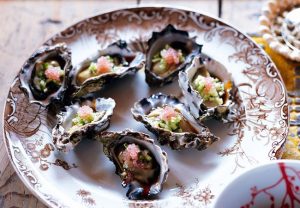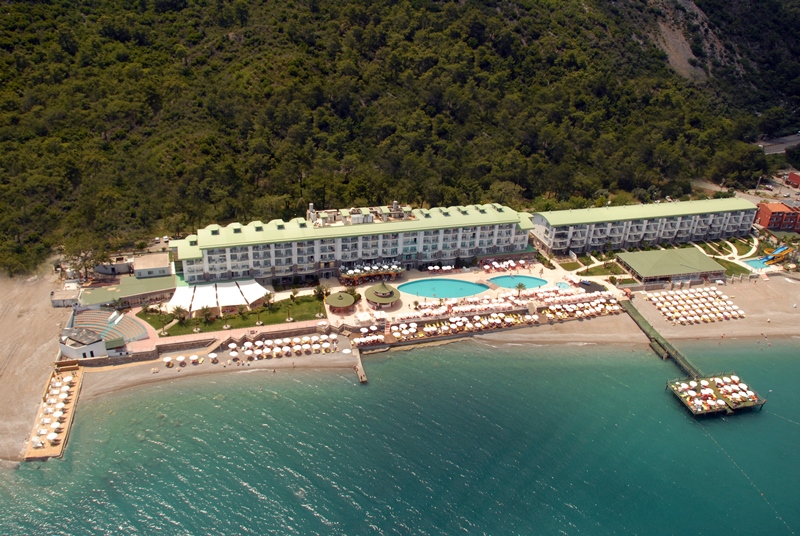Where to taste oysters in Paris
 The season of oysters (the time when they are easily available and taste excellent) lasts from September to April. Gourmets, however, are accustomed to expect October, when the menu appears refined and delicious varieties. This is due to the fact that summer is a great time for small mollusks to gain weight, and in the winter and autumn season there are fewer problems with bacterial infections. The French love oysters. And just the peak of the use of this delicacy falls on the celebration of the New Year and Christmas. Therefore, going to France in the fall, be sure to try this exquisite delicacy!
The season of oysters (the time when they are easily available and taste excellent) lasts from September to April. Gourmets, however, are accustomed to expect October, when the menu appears refined and delicious varieties. This is due to the fact that summer is a great time for small mollusks to gain weight, and in the winter and autumn season there are fewer problems with bacterial infections. The French love oysters. And just the peak of the use of this delicacy falls on the celebration of the New Year and Christmas. Therefore, going to France in the fall, be sure to try this exquisite delicacy!
Size matters
Oysters are classified by size. When purchasing this delicacy, pay attention to the number from 0 to 5 for bulk oysters and from 0 to 6 for oysters with a flat shell.
And now a little more detailed.
fines – medium sized oysters
spéciales – slightly larger oysters and fresher than fines
fines de Claires – oysters fines that spent two months at Marennes-Oléron, filtering clear water through their juicy bodies. Their density per square meter is quite large – up to 20 pieces.
Spéciales de Claires – oysters that matured in Marennes-Oléron for two months too, but they had more space than the fines de Claires.
Pousse en Claires – is considered a low-density oyster (5 oysters per square meter). These heavy oysters are grown in special pools for four months. They grow sweet and meaty.
Oyster Regions
Like a bouquet of wine, so does the taste and texture of the oyster depends deeply on the place of cultivation. After all, each body of water has its own characteristics: different mineral composition, intensity of ebb and flow, temperature, salinity. All this affects the taste of oysters, due to the fact that these animals are filter feeders. Taste will change from season to season every year, anywhere due to the fact that neither flora and fauna nor the frequency of precipitation can remain constant.
Aquitaine: Arcachon is a famous bay in the south-west near Bordeaux, where oysters live in their natural environment. Farmers put red bricks in the water. During the breeding season, oyster youngsters seize stones from all sides. Then people collect such a catch and put it in deeper reservoirs, where oysters are fattened and grow to the desired size. Sometimes the flesh of the mollusks gets a green tint due to the algae.
Normandy: The North-West is famous for deep-water oysters from the coast of the Cotenin peninsula, a delicacy with Isigny and walnut oysters from Saint-Vaast. Sweet oysters can be enjoyed from the Utah Beach.
Brittany: here you will find flat shell oysters, which are usually grown on the local coast. Tourists are offered to try these varieties: Cancale (branded, salted), Paimpol (juicy and fleshy, grown on deep-sea farms), Belon (famous oysters from the mouth of the same name in South Brittany, which ripen in brackish water). Taste large mollusks at Saint-Brieuc, Morlaix and the Bay of Brest.
West Coast: Ile de Ré, Noirmoutier, Baie de Bourgneuf, Pornic, and Beauvoir-sur-Mer are growing places for small but tasty oysters.
Languedoc: Bouzigue is marked as a place with extremely clean water, so delicious clams can be consumed right on the spot.
Marennes-Oléron: taste the Ile d’Oléron oyster, as well as the Charente variety from special reservoirs. These oysters ripen in special cleansing pools. Sometimes blue-green algae from the surrounding waters give the mollusc pulp an unusual shade.
How to treat delicacy
Oysters are almost never washed (to preserve the unique taste), often opened right before use and always placed on ice. In France, as a rule, mollusks are served without cutting the adductor muscle, thanks to which the animal is attached to the shell. This is believed to keep the oysters fresh longer. Take a special fork and gently separate the flesh from the shell. Add lemon juice or oyster sauce, or discard all seasonings and swallow this delicacy in one go!
Where to taste the most delicious oysters in Paris?
Le Baron Rouge – Bar delivers oysters from Brittany. The place has a very unusual design, so you will never forget your first oyster in this place!
Le Mary Celeste – Good cocktails, great wine, and wild oysters served with a slightly spicy Asian sauce. During the season you can get to happy hours when oysters cost € 1 each.
La Cabane à Huitres – Francis Duburg grows oysters in special reservoirs and then brings them to this establishment. Be sure to try these refreshing clams.



